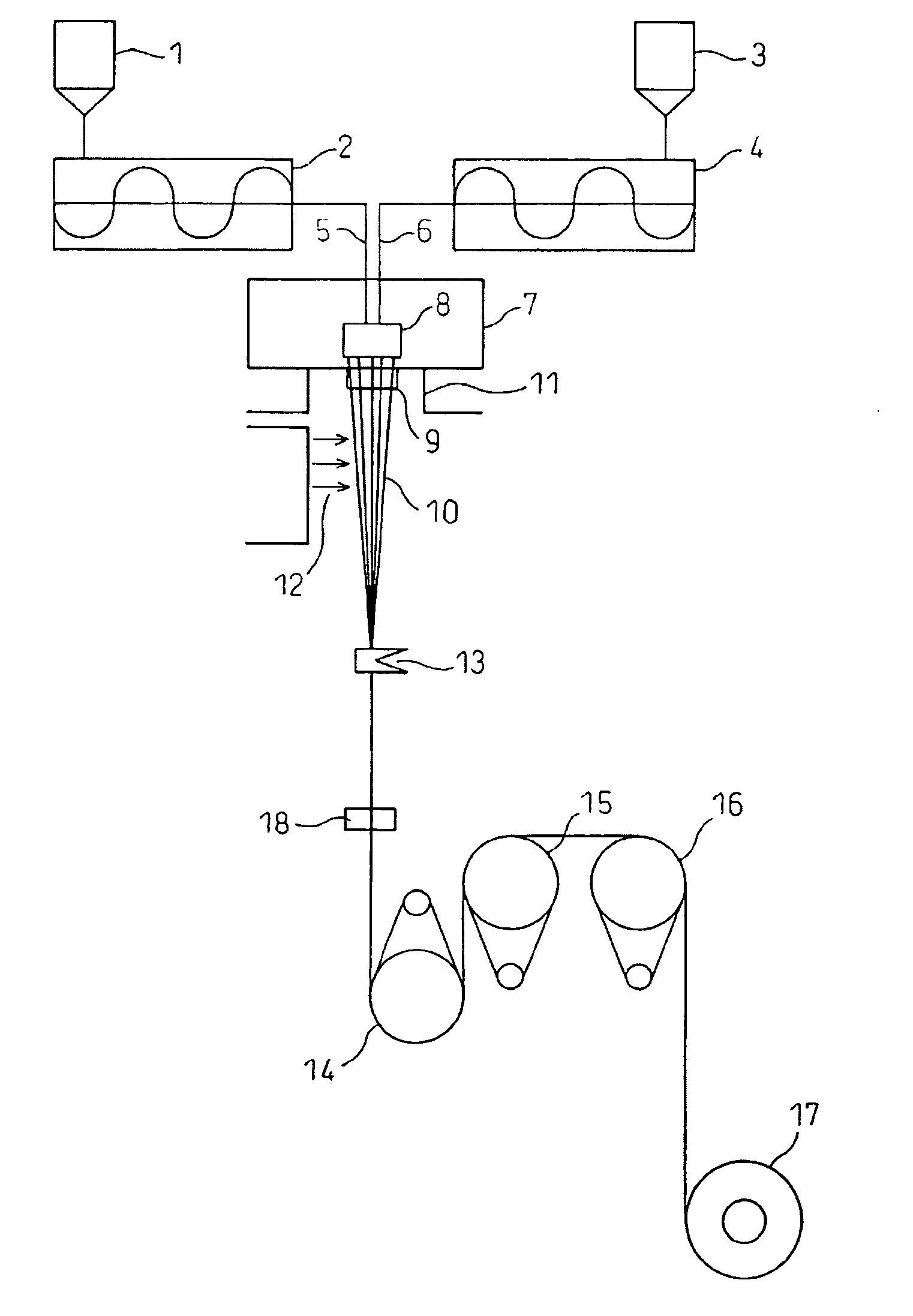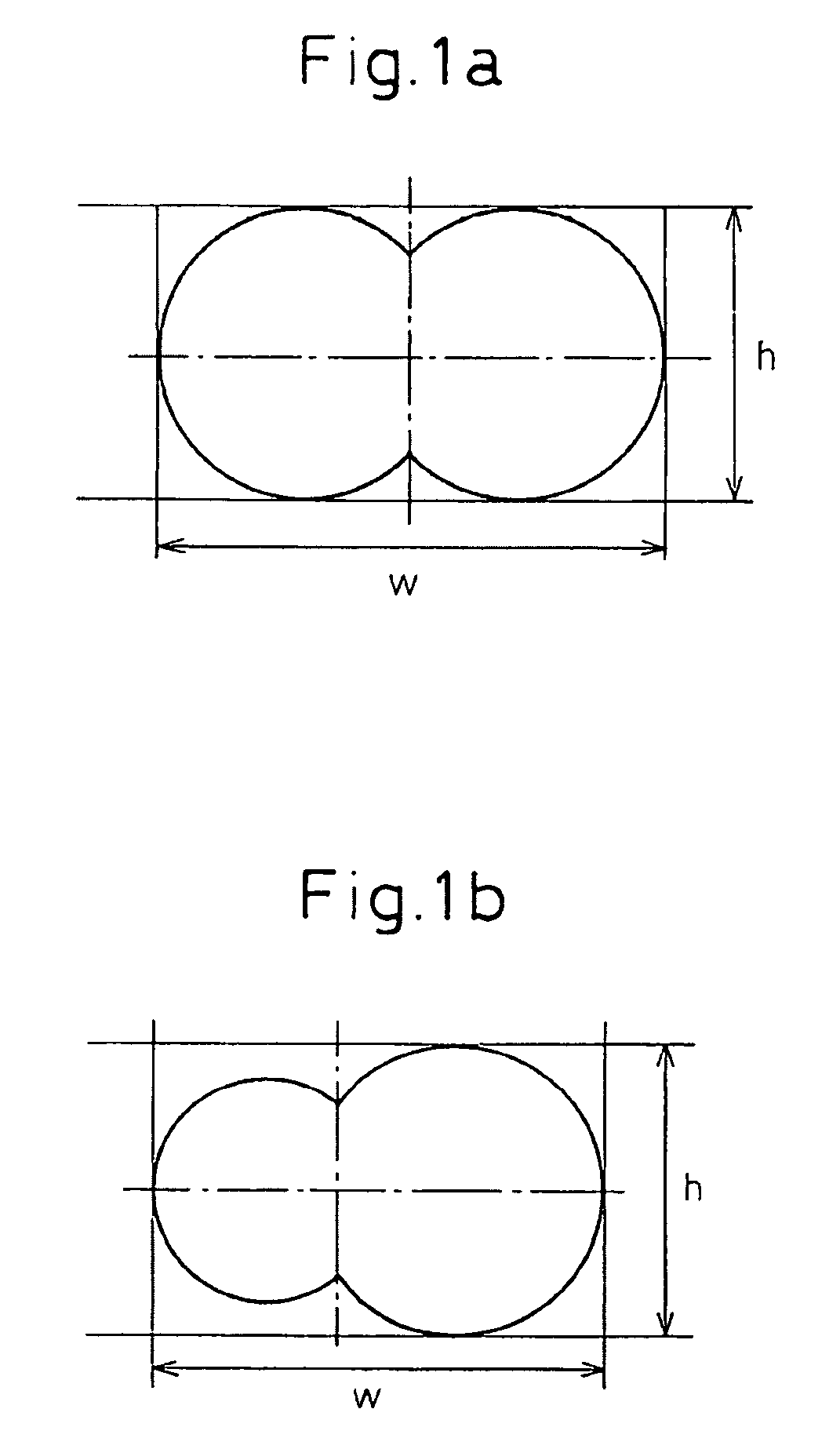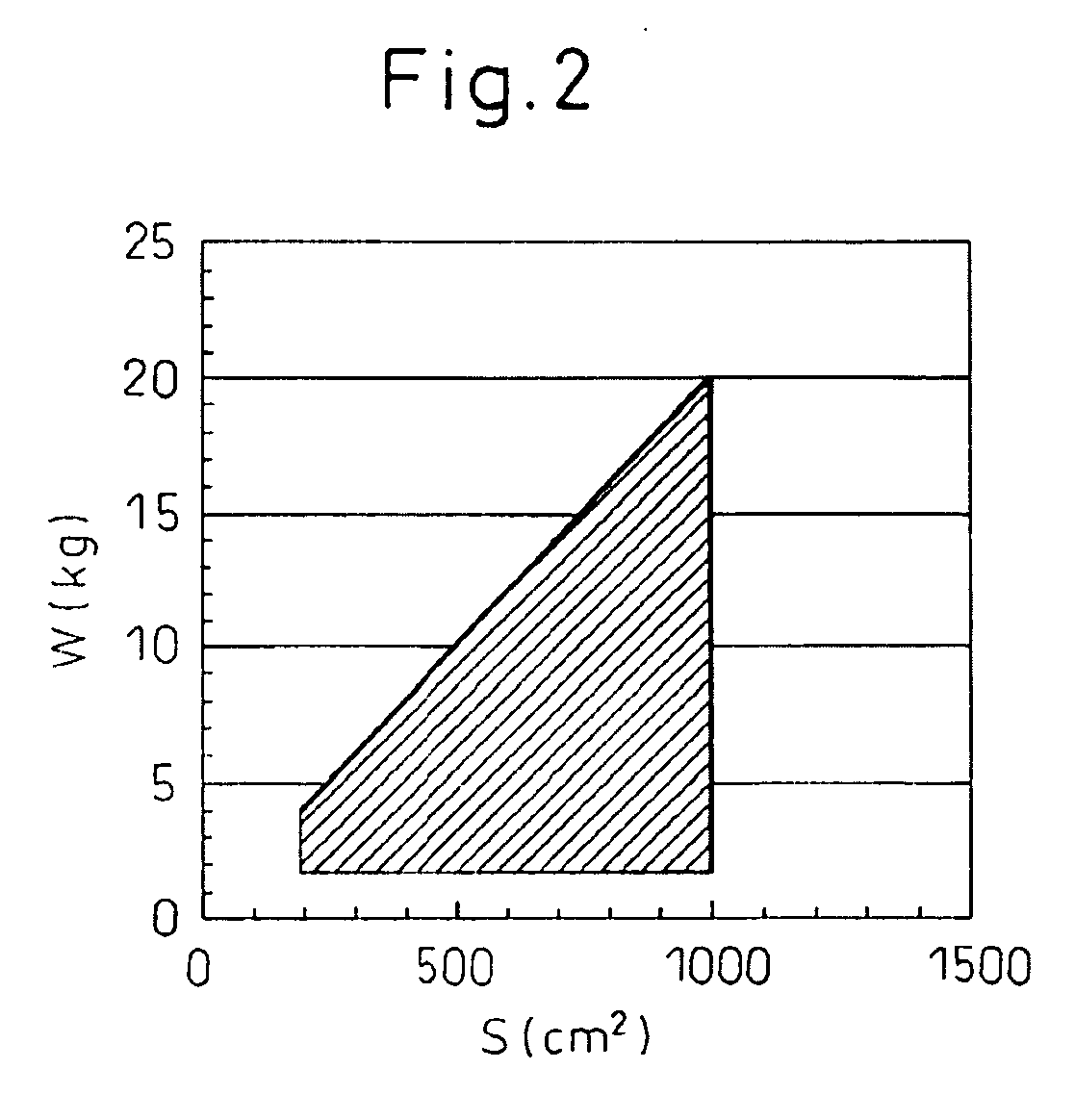Highly Crimped Conjugated Fiber Cheese Package and Process for Its Production
a technology of polytrimethylene terephthalate and conjugate fiber, which is applied in the field of polytrimethylene terephthalate-based highly crimped conjugate fiber cheese package, can solve the problems of less than two-stage processes, inability to obtain a high wound weight, and at least two-stage processes, and achieves low alignment, high shrinkage property, and high alignment
- Summary
- Abstract
- Description
- Claims
- Application Information
AI Technical Summary
Benefits of technology
Problems solved by technology
Method used
Image
Examples
examples 1-4
Comparative Examples 1 and 2
[0246]These examples demonstrated the effects of varying the roll speed, breaking elongation and shrinkage factor during production on the physical properties of the conjugate fiber, the reelability of the cheese package, the dyeing quality (surface / core color difference) and the fabric stretch performance.
[0247]The production conditions for Example 1 were as follows.
[0248]PTT with an intrinsic viscosity of 1.26 dl / g containing 0.4 wt % titanium oxide as one component and PTT with an intrinsic viscosity of 0.92 dl / g containing 0.4 wt % titanium oxide as the other component were used to produce a PTT conjugate fiber cheese package with 167 dtex / 48 filaments under the following conditions, using a composite spinning apparatus as shown in FIG. 5.
(Spinning Conditions)
[0249]Pellet drying temperature and maximum moisture content: 110° C., 15 ppm.
Extruder temperature: 255° C. on A-shaft, 250° C. on B-shaft.
Spin head temperature: 265° C.
Spinneret: Nozzle having p...
examples 5-7
Comparative Examples 3 and 4
[0260]These examples demonstrate the effect of the cross-sectional shape of the single filament composing the conjugate fiber cheese package.
[0261]PTT conjugate fiber having cross-sectional shapes with different flatnesses was obtained using different spinning hole shapes for spinning, drawing and take-up in the same manner as Example 2.
[0262]The physical properties and evaluation results for the conjugate fibers and cheese packages obtained in the examples are shown in Table 3.
[0263]As can be seen from Table 3, the conjugate fibers and cheese packages according to the examples of the invention had excellent stretch performance and form retention, as well as satisfactory reelability and dyeing quality at the core (color difference between surface and core).
[0264]Comparative Example 3 had a low degree of flatness outside of the range specified by the invention, and as a result the crimp performance of the conjugate fiber was insufficient and the effect of ...
examples 8 and 9
Comparative Examples 5 and 6
[0266]These examples demonstrate the effect of the shrinkage factor during take-up of the conjugate fiber cheese package.
[0267]The third roll temperature and relaxation ratio were changed for spinning, drawing and take-up in the same manner as Example 2, to obtain conjugate fiber having different shrinkage factors.
[0268]The physical properties and evaluation results for the conjugate fibers and cheese packages obtained in the examples are shown in Table 4.
[0269]As can be seen from Table 4, the conjugate fibers and cheese packages according to the examples of the invention had excellent stretch properties and form retention, as well as satisfactory reelability and dyeing quality at the core (color difference between surface and core).
[0270]Comparative Example 5 had a high shrinkage factor outside of the range specified by the invention, and as a result a package tightening occurred and the effect of the invention in terms of reelability and dyeing quality ...
PUM
| Property | Measurement | Unit |
|---|---|---|
| crimp elongation | aaaaa | aaaaa |
| crimp elongation | aaaaa | aaaaa |
| crimp elongation | aaaaa | aaaaa |
Abstract
Description
Claims
Application Information
 Login to View More
Login to View More - R&D
- Intellectual Property
- Life Sciences
- Materials
- Tech Scout
- Unparalleled Data Quality
- Higher Quality Content
- 60% Fewer Hallucinations
Browse by: Latest US Patents, China's latest patents, Technical Efficacy Thesaurus, Application Domain, Technology Topic, Popular Technical Reports.
© 2025 PatSnap. All rights reserved.Legal|Privacy policy|Modern Slavery Act Transparency Statement|Sitemap|About US| Contact US: help@patsnap.com



